Planet announces new line of satellites for daily Earth imaging
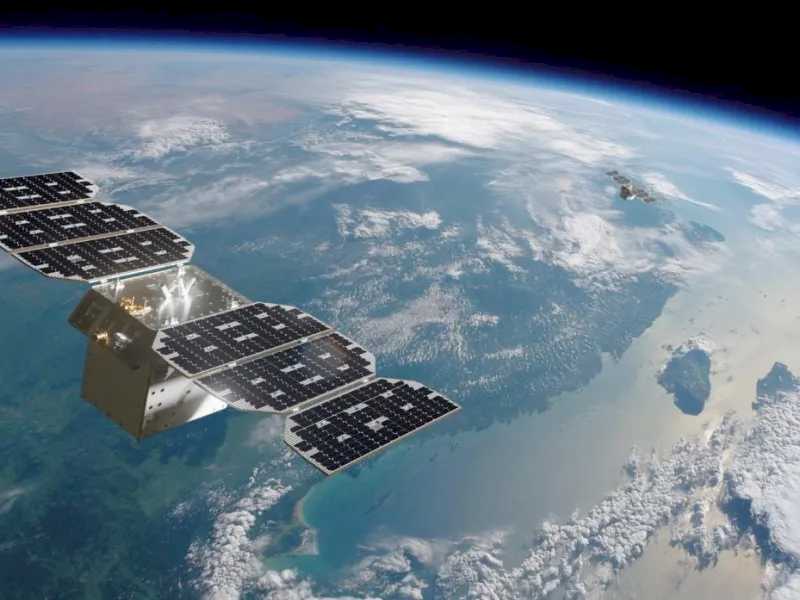
Planet announces new line of satellites for daily Earth imaging

View 343 times
#WASHINGTON — A group of former senior U.S. defense officials is urging the #Pentagon to dramatically expand investment in advanced hypersonic weapons and manufacturing capacity, warning that #China and #Russia are outpacing the United States in developing high-speed, maneuverable missiles that threaten to erode U.S. military deterrence.

View 344 times
SYDNEY — An Australian company that is a leader in taking images of spacecraft in low Earth orbit is seeking to widen its aperture to monitor higher orbits, and even beyond.
During an event on the sidelines of the International Astronautical Congress here, Will Crowe, co-founder and chief executive of HEO, highlighted the progress the company has made in what is formally known as non-Earth imaging, or using spacecraft to image other spacecraft in orbit.
HEO does not operate its own satellites but instead works with several Earth imaging companies, partnering with them to access those satellites when they are not being used, such as when passing over oceans. “Pairing our mission with theirs is a really fantastic collaboration,” he said. “It allows us to bring the lowest cost to our partners.”
HEO has conducted 4,000 “missions,” which is what the company calls a flyby by an imaging satellite with a target of interest. Those missions have imaged more than 800 spacecraft, ranging from Starlink and Project Kuiper satellites to the Chinese space station Tiangong.
Advances in imaging technologies and techniques, including cameras HEO developed, have resulted in dramatic improvements in quality. Crowe showed a series of images of Tiangong starting in 2023, when the company’s images showed only basic details of the station: a 5 on the company’s 1-to-10 scale of image quality, he said.
He contrasted that with one taken earlier this year that was far sharper, a “10+” quality image that had enough resolution to make out details on individual modules and the articulation of the station’s robotic arm. “You can almost make out the writing on the side,” he said.
The imagery has helped satellite operators diagnose problem with their spacecraft. “Now we can inspect satellites in space,” Crowe said. “When you satellite fails, there is a way to see how it has failed.”
In one case, HEO imagery showed a satellite was tumbling, allowing the operator to detumble and recover the spacecraft, while in another, imagery showed a solar panel had not deployed. “We’ve already helped a bunch of companies correct their satellites and get their missions back on track.”
The company has been able to observe satellites at altitude of up to about 700 kilometers, but Crowe said HEO is working to install cameras on other satellites to enable observations of satellites at up to 1,200 kilometers. “This is where a lot of critical assets are, and there’s a lot of tensions about the things being launched those altitudes,” he said.
HEO plans to aim much higher, though. Crowe announced at the event that the company is working to install cameras on spacecraft to enable observations in the geostationary belt. “All our customers have been asking us to get to GEO for a long time,” he said.
HEO plans to work with unnamed partners on spacecraft in “monitoring orbits” a few hundred kilometers above and below GEO. That will include the capability to maneuver to inspect individual spacecraft if needed.
The company plans to being service in January 2027. “We’ve already had customers who have bought into this,” he said.
“HEO’s mission is to image anything in the solar system on demand,” Crowe said, and that goes beyond spacecraft in Earth orbit. The company is studying ways to use spacecraft in GEO to image asteroids that make close approaches to Earth.
“Just last year, there were four asteroids that passed close enough that a satellite in GEO or near GEO with a camera could potentially use a little bit of fuel that it would need to use anyway to get to a graveyard orbit but instead pass by an asteroid that happened to be floating past,” he said.
Such imagery could be used for scientific purposes or even resource extraction, he said. HEO estimates that at least 30 asteroids more than 19 meters across will pass “really close” to the GEO belt and be potential targets for imaging missions. The best-known example Apophis, a large near Earth asteroid that will pass inside the GEO belt in April 2029.
“This is an opportunity that is too good to miss,” he said. “We’re going to go past this asteroid in 2029, which we’re incredibly excited about, all using a GEO satellite at the end of its life.”
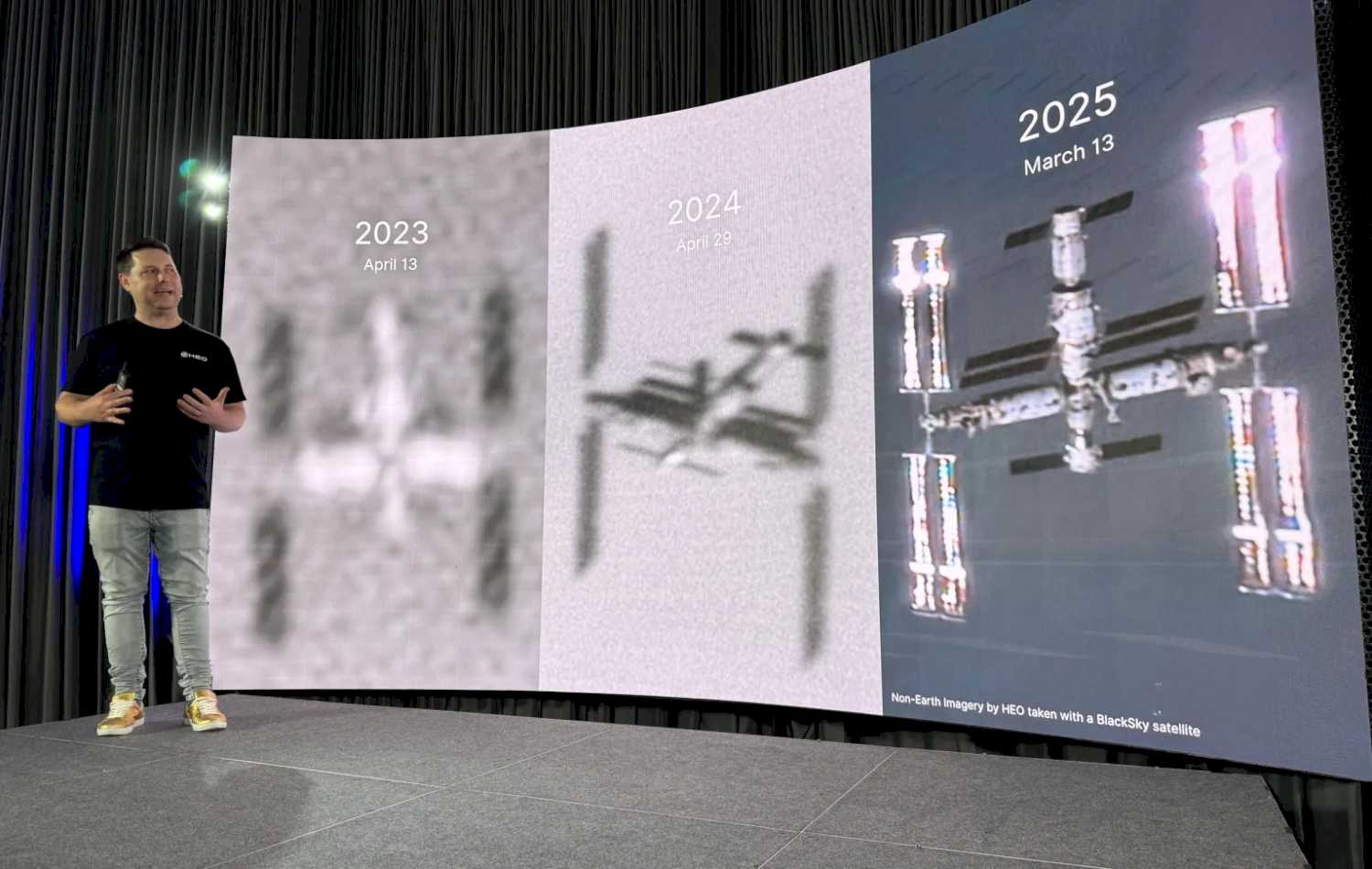
View 326 times
L3Harris looks to scale production of hybrid satcom radios after successful Air Force tests.
WASHINGTON — L3Harris Technologies said it has successfully demonstrated a satellite-based radio system that allows military aircraft to tap commercial space broadband services such as SpaceX’s Starlink while maintaining encrypted, government-grade communications.

View 378 times
#NASA modifies Dream Chaser ISS cargo contract as Sierra Space shifts to defense work .
WASHINGTON — Sierra Space and NASA have sharply revised a contract to use the company’s Dream Chaser vehicle to deliver cargo to the International Space Station as the company pivots to defense applications.
NASA announced Sept. 25 that it modified its Commercial Resupply Services 2, or CRS-2, contract with Sierra Space. That contract originally included seven missions to transport cargo to and from the ISS.
Instead, Sierra Space will fly a single “free flight demonstration” mission, scheduled for late 2026, that will not go to the ISS. The contract no longer specifies a set number of cargo missions to the station, although NASA said it retains the ability to order such missions.
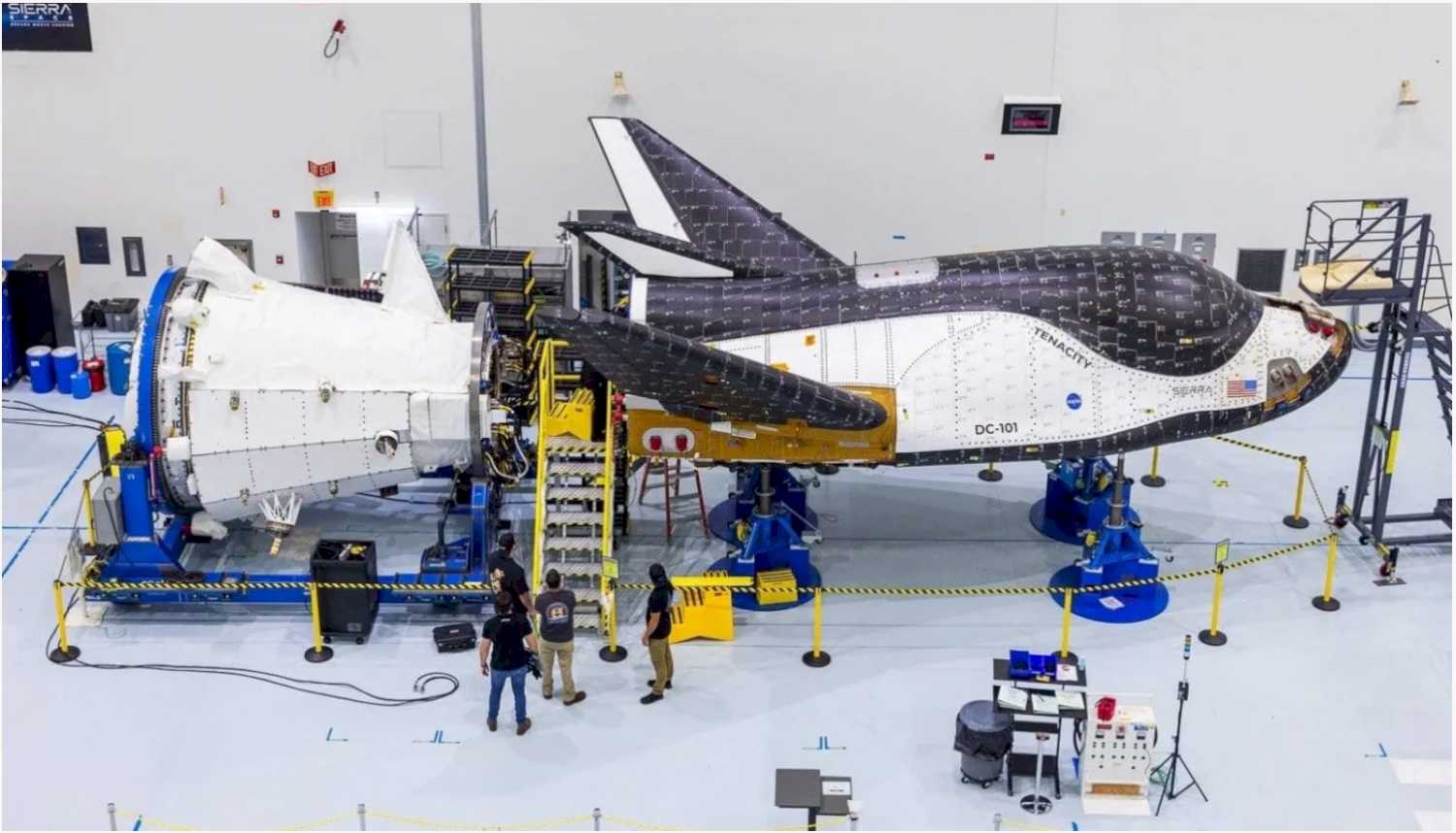
View 375 times
A trio of space weather satellites blast off together to study the sun’s violent side
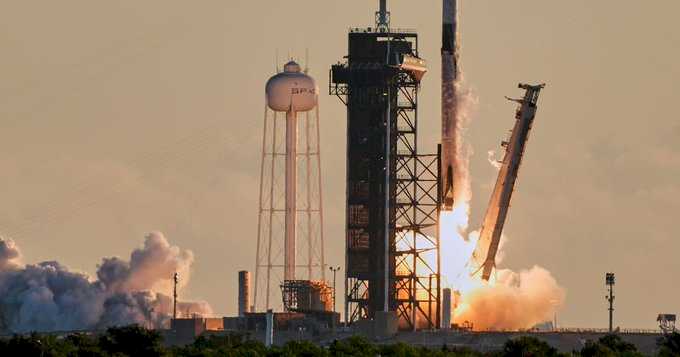
View 383 times
Gabrielle becomes a hurricane in Atlantic waters southeast of Bermuda. The Miami-based National Hurricane Center said Gabrielle became a Category 1 hurricane after its top sustained winds rose to 75 mph (120 kph). Gabrielle was centered some 320 miles (515 kilometres) southeast of Bermuda and was moving to the north-northwest at 10 mph (17 kph).
The hurricane center said Gabrielle could become a major hurricane in the early part of this week as it is expected to undergo steady to rapid intensification over the next day or so. On the current forecast track, Gabrielle was expected to pass east of Bermuda on Monday.
A hurricane hunter aircraft found the storm at hurricane strength and moving on a more north-northwest track. But the center said a more northerly course was expected Monday. No coastal watches or warnings are in effect, but meteorologists urged interests in Bermuda to keep close watch.
Large ocean swells kicked up by Gabrielle are impacting Bermuda and are expected to reach the Eastern Seaboard from North Carolina northward into Atlantic Canada over the coming days.
In the Pacific, Narda emerged well offshore of Mexico on Sunday afternoon and posed no threat to land.
The hurricane center said Narda had top sustained winds of about 40 mph (65 kph) and was positioned about 240 miles (386 kilometres) south-southeast of Zihuatanejo, Mexico, while moving to the northwest at 10 mph (17 kph). The center says Narda could become a hurricane while heading further offshore.
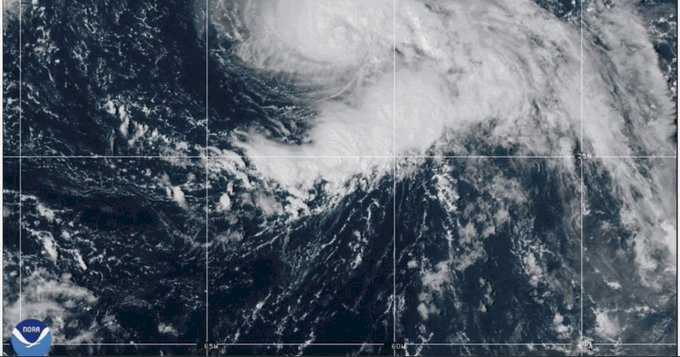
View 395 times
What to know about this weekend’s total eclipse blood moon,
A spectacular lunar event will take place this weekend, but it unfortunately won’t be visible from Canada.
Between Sept. 7 and Sept. 8, a blood moon total lunar eclipse will be underway during daytime hours in Canada. It will be best viewed from certain parts of China, Russia, India and Australia.
Dr. Ilana MacDonald is the public outreach, communications, and events strategist at the Dunlap Institute for Astronomy & Astrophysics at the University of Toronto. She told CTVNews.ca in a phone interview Thursday that a lunar eclipse happens when the Earth’s shadow covers up the full moon.
“The Earth is going between the sun and the moon, and the Earth’s shadow is being cast onto the moon,” she said. “You gradually see the moon disappear … like a circular shadow going over the moon’s surface."
The phenomenon resembles a bite missing from the moon, which gradually gets smaller until only a little crescent is left.
“Then when the Earth’s shadow completely covers the moon … that’s when you have a total lunar eclipse,” MacDonald says.
Why is it called a Blood Moon?
The blood moon refers to the colour, which MacDonald said comes from sunlight refracting through the edges of the Earth’s atmosphere, scattering onto the moon’s surface.
“Because the Earth’s atmosphere scatters out blue light more than red light, then the surface of the moon tends to have this sort of reddish hue, which can range from a dark orange to a really dark reddish brown,” she says.
There’s a possibility of a lunar eclipse every six month, when tilts of the orbits of the earth and moon perfectly align with the sun.
MacDonald said a lunar eclipse isn’t always visible from the same location because sometimes it’s below the horizon when it’s happening, like this weekend in Canada.
The next lunar eclipse will be in March 2026, but MacDonald said that will be only visible in Northwestern Canada. The one after that will take place on Dec. 31, 2028.
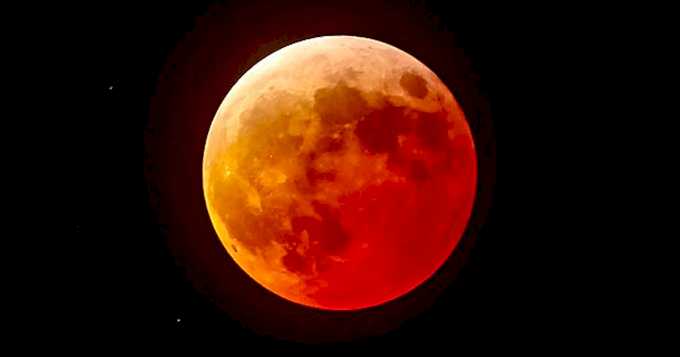
View 474 times
#Lego reveals most expensive set ever .
Lego introduced its most expensive set this week, announcing the release of the Lego Ultimate Collection Series Star Wars Death Star. Priced at US$1,000, or C$1,299.99, the 9,000-plus piece set is Lego’s first-ever item to cost four figures.
The new Death Star set is an intricate piece that’s more than two feet tall and two feet wide. The set, which is not spherical like its earlier Death Star model, but instead is a vertical diorama set, has more than 15 rooms that depict many iconic scenes from the original Star Wars film, “A New Hope,” and “Return of the Jedi,” according to the company’s website.
The set also contains 38 mini figures, including Luke Skywalker, Han Solo, Princess Leia, as well as Galen Erso from “Rogue One” and the Hot Tub Stormtrooper from the Lego Star Wars video games, the company said on its website.
Lego’s previous set that was its most expensive was the Star Wars Millennium Falcon, a 7,541-piece set which broke all records, costing US$800 eight years ago.
This set isn’t the first Death Star to be released by the company, although it is the largest model Lego has ever created. In the last 25 years, Lego has released several models of Star Wars sets in different sizes.
Lego’s World Map is the record holder for having the highest number of pieces, boasting 11,695 .
According to Fortune, roughly 15 per cent of Lego’s sets are marketed for adults.
“Lego bricks have won over adults, growing its $10 billion toy market foothold,” Fortune wrote.
The Lego UCS Star Wars Death Star will officially hit the market Oct. 4
View 448 times
Space news on Umojja.com